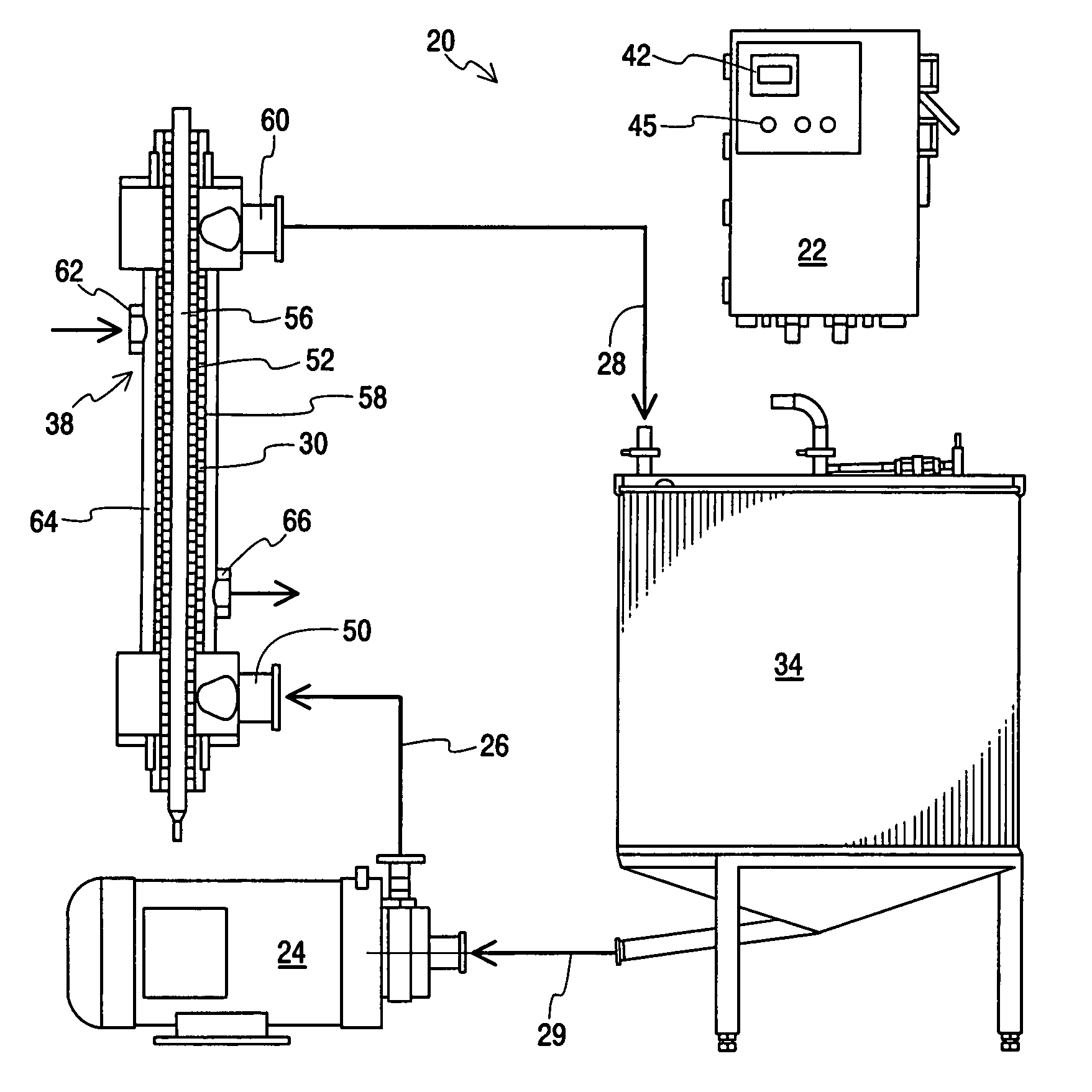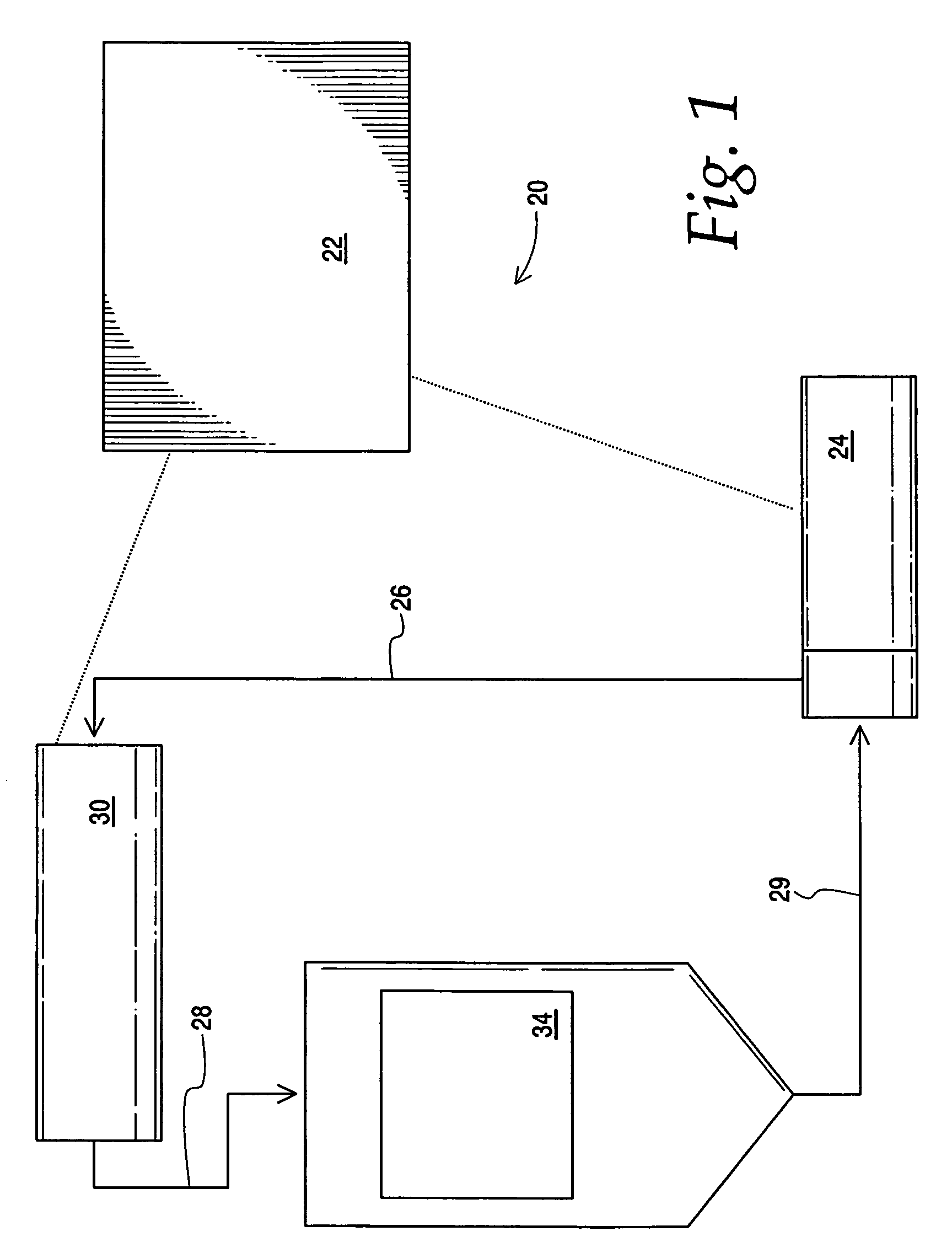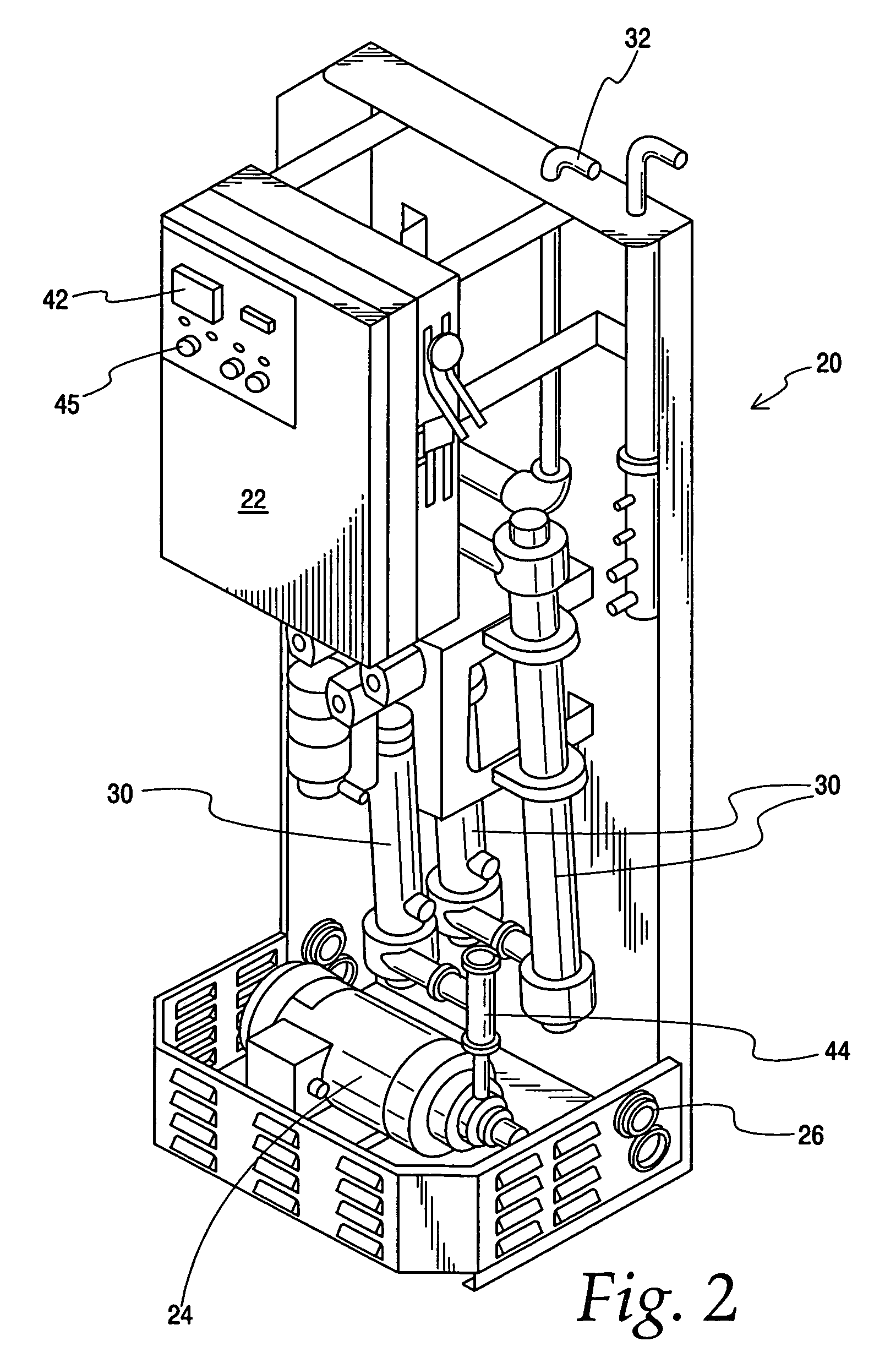Apparatus for pasteurizing milk for feeding to calves
a technology of pasteurizing apparatus and colostrum, which is applied in the field of liquid sterilization system, can solve the problems of destroying beneficial immunoglobulins, less likely to be adequately treated, and heating milk to too high temperature, and achieves optimal sterilization of milk and/or colostrum, prevent stagnation in uv reactor related piping, connections, and control systems
- Summary
- Abstract
- Description
- Claims
- Application Information
AI Technical Summary
Benefits of technology
Problems solved by technology
Method used
Image
Examples
example a
[0052]In this example A, the standard batch pasteurizer is more effective than the UV pasteurizer for all the organisms tested in killing harmful bacteria, but when milk is used, the invention is effective for all three organisms tested (99.98% for E. coli, 100% for B. cereus and 99.992% for Salmonella). However, when colostrum is used the invention is certainly less effective for all three to the point where it may not be effective enough. More research may be needed to determine the maximum effectiveness, in terms of increasing treatment time, for effective bactericidal action on microorganisms when present in colostrum.
[0053]Further, single Radial immunodiffusion assays were also run for these samples for bovine IgG. The batch pasteurizer samples displayed a significant reduction in IgG (around 43%) whereas the UV samples had no reduction in IgG at all. Thus, the present invention as shown in Example A results in healthier waste milk, but possibly not healthier colostrum.
[0054]
CF...
example b
[0055]For this example, the UV Pasteurizer trial for the milk was repeated, with the addition of another time at 22 minutes exposure of the milk to UV light. These results are very similar to Example A with a satisfactory level of kill after 15 minutes exposure for 10 gallons of milk with all three bacteria tested.
[0056]The second part of the study utilized colostrum which Example A had an ineffective level of kill after 15 minutes for the organisms tested. Example B utilized exposure levels of 30 and 45 minutes. These results indicated better efficacy in two of the three organisms at 15 minutes versus Example A. Example A shows the efficacy at 15 minutes to be marginal for two organisms and unacceptable for the third (Bacillus). At both 30 and 45 minutes exposure, however, the efficacy of the pasteurizer of the present invention for all three organisms was adequate to very good.
[0057]Further, Single Radial immunodiffusion assays were also run for these samples for bovine IgG. The r...
example c
[0059]This example utilized colostrum at the same exposure levels of 15, 30 and 45 minutes as Example B. These results indicated that the UV Pasteurizer of the present invention overall is still effective at 30 and 45 minutes, especially the latter time. The only possible exception is possibly the Bacillus where only the 45 minute exposure time showed solid results. The results generally showed less percent kill then the previous test at the same exposure times, but the Time 0 concentrations were also higher, which probably accounts for this reduction in kill. In real field use, the concentration of these pathogens is very unlikely to be anywhere near what is being tested in this example. It can therefore be concluded that the kill rates are satisfactory at both 30 and 45 minutes.
[0060]Further, Single Radial immunodiffusion assays were also run for these samples for bovine IgG. The results indicated minimal or no reduction in immunoglobulin (IgG) after 15, 30 and 45 minutes. This is...
PUM
 Login to View More
Login to View More Abstract
Description
Claims
Application Information
 Login to View More
Login to View More - R&D
- Intellectual Property
- Life Sciences
- Materials
- Tech Scout
- Unparalleled Data Quality
- Higher Quality Content
- 60% Fewer Hallucinations
Browse by: Latest US Patents, China's latest patents, Technical Efficacy Thesaurus, Application Domain, Technology Topic, Popular Technical Reports.
© 2025 PatSnap. All rights reserved.Legal|Privacy policy|Modern Slavery Act Transparency Statement|Sitemap|About US| Contact US: help@patsnap.com



